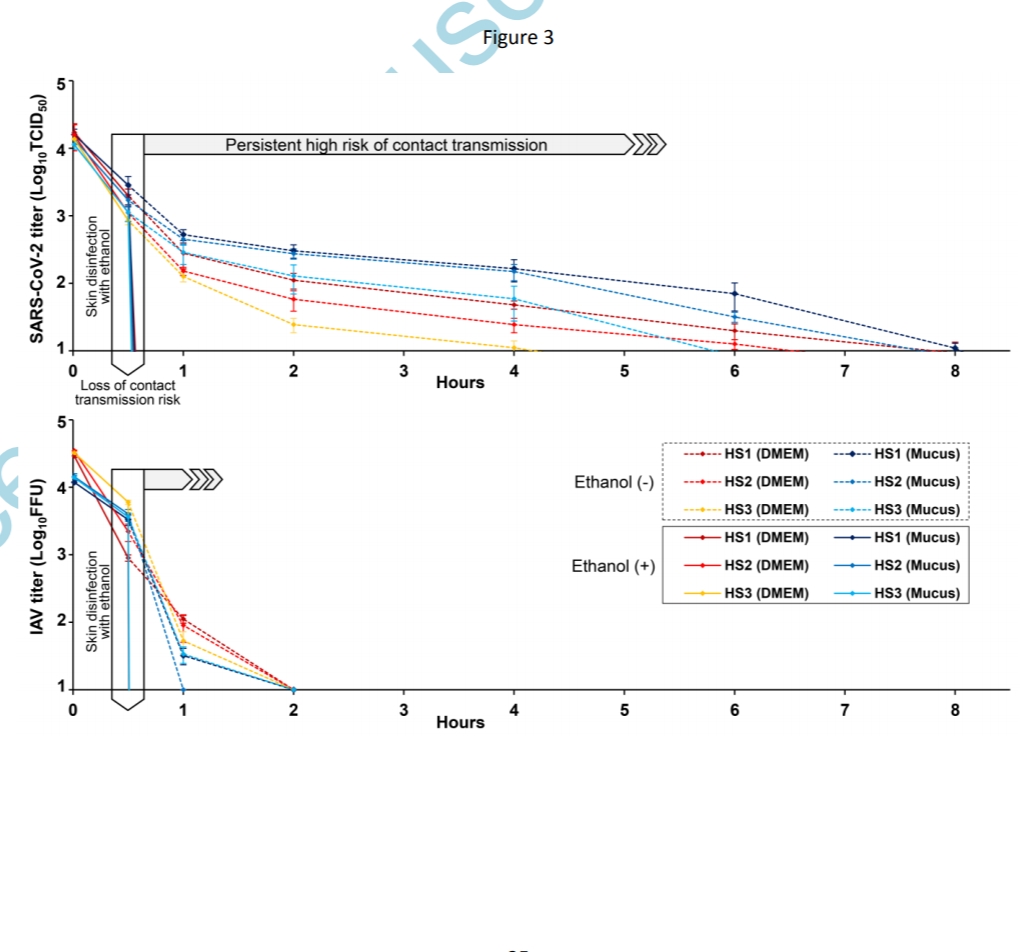Survival of SARS-CoV-2 and influenza virus on the human skin: Importance of hand hygiene in COVID-19
Ryohei Hirose, Clinical Infectious Diseases, 03 October 2020
Background
The stability of the severe acute respiratory syndrome coronavirus 2 (SARS-CoV-2) on human skin remains unknown, considering the hazards of viral exposure to humans. We generated a model that allows the safe reproduction of clinical studies on the application of pathogens to human skin and elucidated the stability of SARS-CoV-2 on the human skin.
Methods
We evaluated the stability of SARS-CoV-2 and influenza A virus (IAV), mixed with culture medium or upper respiratory mucus, on human skin surfaces and the dermal disinfection effectiveness of 80% (w/w) ethanol against SARS-CoV-2 and IAV.
Results
SARS-CoV-2 and IAV were inactivated more rapidly on skin surfaces than on other surfaces (stainless steel/glass/plastic); the survival time was significantly longer for SARS-CoV-2 than for IAV [9.04 h (95% confidence interval: 7.96–10.2 h) vs. 1.82 h (1.65–2.00 h)]. IAV on other surfaces was inactivated faster in mucus versus medium conditions, while SARS-CoV-2 showed similar stability in the mucus and medium; the survival time was significantly longer for SARS-CoV-2 than for IAV [11.09 h (10.22–12.00 h) vs. 1.69 h (1.57–1.81 h)]. Moreover, both SARS-CoV-2 and IAV in the mucus/medium on human skin were completely inactivated within 15 s by ethanol treatment.
Conclusions
The 9-h survival of SARS-CoV-2 on human skin may increase the risk of contact transmission in comparison with IAV, thus accelerating the pandemic. Proper hand hygiene is important to prevent the spread of SARS-CoV-2 infections.














